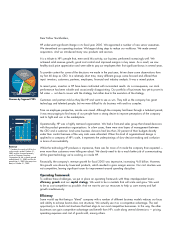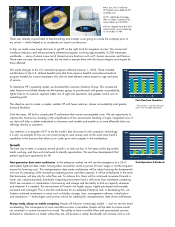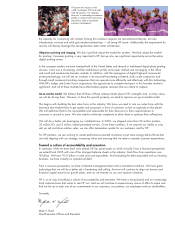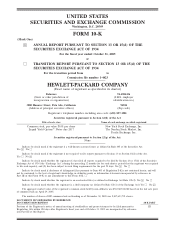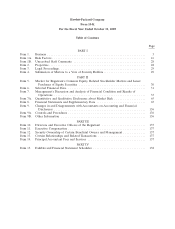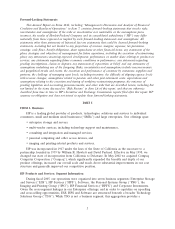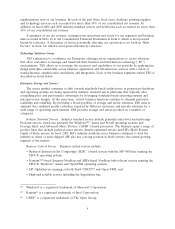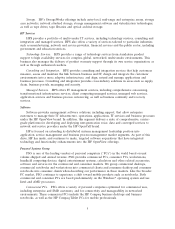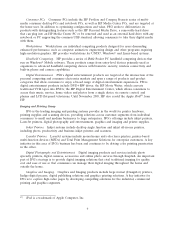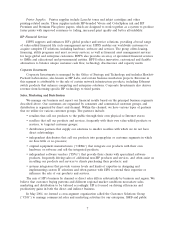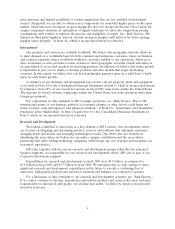HP 2005 Annual Report Download - page 3
Download and view the complete annual report
Please find page 3 of the 2005 HP annual report below. You can navigate through the pages in the report by either clicking on the pages listed below, or by using the keyword search tool below to find specific information within the annual report.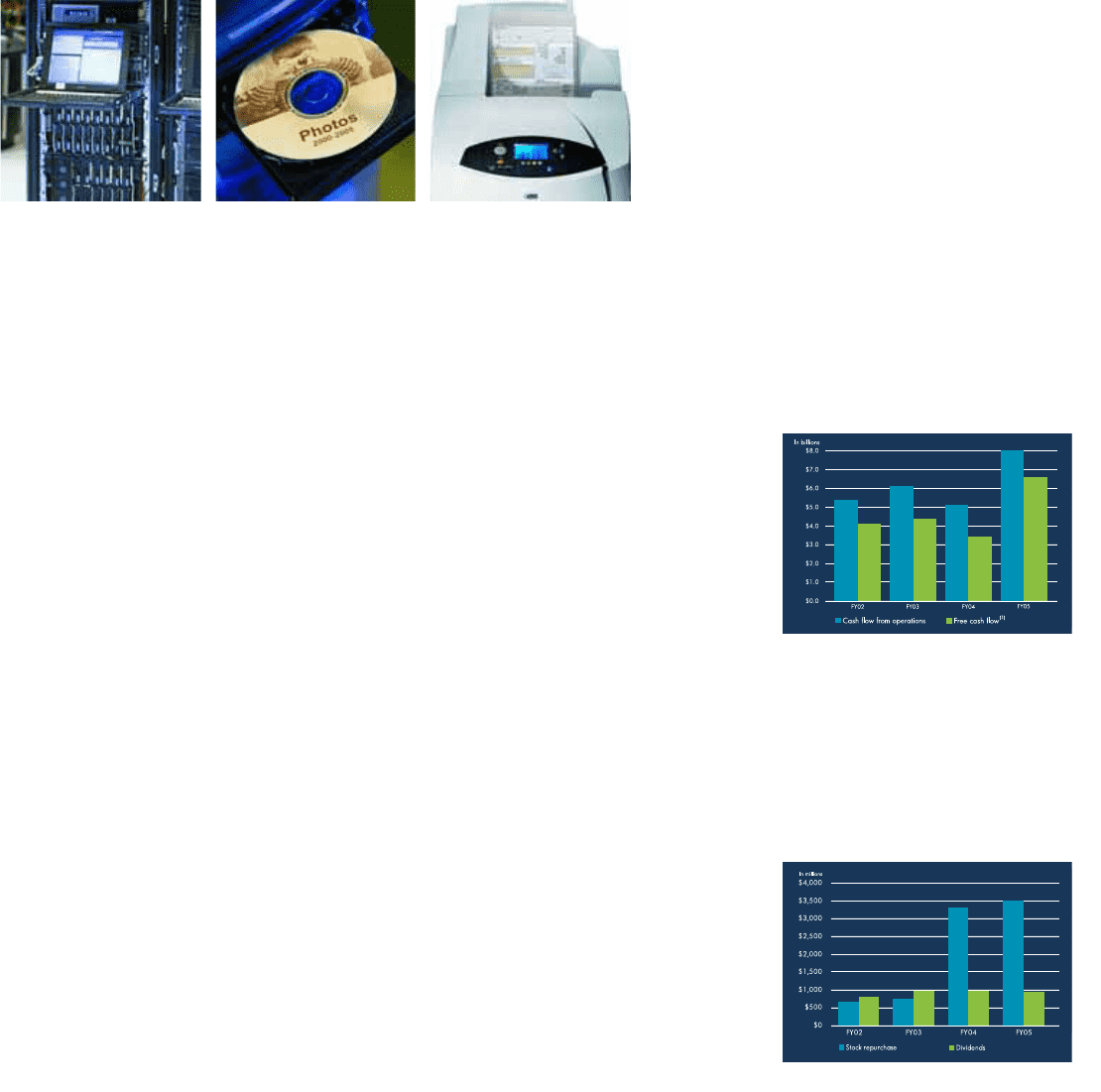
There was already a good deal of benchmarking and analytic work going on inside the company prior to
my arrival — which helped us to accelerate our recent cost decisions.
In July, we made some tough decisions to get HP on the right track for long-term success. We announced
workforce reduction and enhanced early retirement programs involving approximately 15,300 employees
worldwide — many of whom came out of shared service functions such as IT, human resources and finance.
These were not easy decisions to make, but we tried to execute them with the utmost integrity and respect for
those affected.
We made changes to the U.S. retirement programs effective January 1, 2006. These included
modifications to the U.S. defined benefits plan that froze pension benefits and reduced medical
program benefits for current employees who did not meet defined criteria based on age and years
of service.
To streamline HP’s operating model, we dissolved the Customer Solutions Group. This commercial
sales function was folded directly into the business groups to provide each with greater accountability,
tighter links to its customer segment, better line of sight into operations and greater control over its
operating profit.
The objective was to create a simpler, nimbler HP with fewer matrices, clearer accountability and greater
financial flexibility.
Over the years, HP built a complicated IT architecture that carries unacceptable costs. We see opportunity to
improve this function by investing in the simplification of this environment. Building a single, integrated view of
our data will help us better understand our business and markets and enable us to more efficiently tailor our
offerings directly to customers.
Our intention is to engineer HP IT to be the world’s best showcase for the company’s technology.
It is also an example of how we can invest money to save money and, at the same time, build a
capability in the business that allows us to scale, grow and compete in the marketplace.
Growth
The best way to steer a company toward growth is to look out four or five years at the big market
trends evolving, and then work backward to identify opportunities. We see three developments that
present significant opportunity for HP.
Next-generation data center architecture. In the enterprise market, we will see the emergence of a 24 x7
automated, lights-out data center. Moving labor around the world in pursuit of lower wages is not the long-term
answer for lowering costs. This next-generation data center architecture will be about lowering the fundamental
unit cost of computing, while increasing computing power and data capacity. It will be utility-based in the sense
that businesses will pay only for what they use. To achieve this, there will be continued movement toward a
lower cost, industry-standard, distributed computing environment and a shift away from mainframe computing.
We’ll see increases in virtualization of processing and storage and the ability to dial up capacity whenever
and wherever it is needed. This environment will need to be highly secure, highly automated and remotely
accessed and managed. This is also the architecture for an Adaptive Enterprise and, in developing this, we
foresee continued investments in areas such as blades, storage, Linux, management software, virtualization
and automation — technologies and services critical for creating this next-generation data center architecture.
Always-ready, always-on mobile computing. People will become increasingly mobile — and we see this trend
accelerating. The convergence of voice and data services is inevitable. People will be able to receive e-mail
via voicemail or receive voicemail via e-mail. The ability to have a mobile office and personalized services
delivered to individuals no matter where they are will become a reality. Bandwidth will increase and so will
Cash Flow from Operations
Stock Repurchase & Dividends
(1) Free cash flow is cash flow from oper-
ations minus net capital expenditures.
In June, the 10 millionth
HP ProLiant server rolled off HP’s
assembly lines.
HP’s LightScribe technology
offers a simple, innovative way
to burn labels on CDs/DVDs.
HP has shipped more than 385
million printers since introducing
its first model in 1984.


